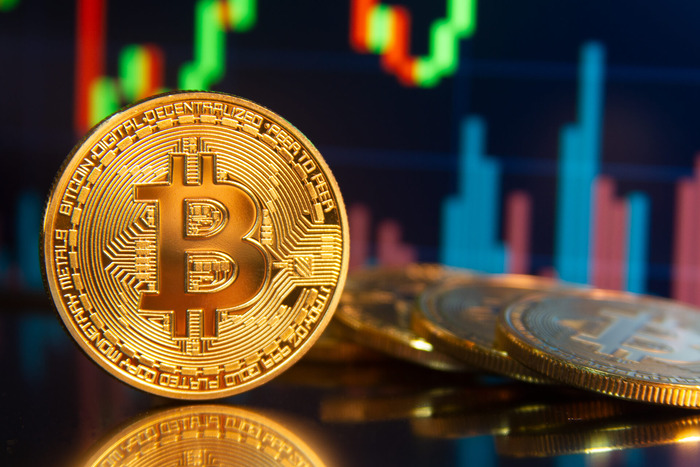Bitcoin is the cryptocurrency that preceded the entire crypto market and blockchain development. Without it, miners couldn’t make additional income, investors wouldn’t have a reliable asset for their portfolio, and developers would lack the use of blockchain smart contracts for creating digital tools. The currency evolved so much that worldwide adoption is discussed globally, considering how helpful the coin is in providing countries with a decentralized way of making money.
Despite its increased success, Bitcoin is challenged by numerous insufficiencies, such as the lack of capacity for mining rigs to process complex mathematical blocks without consuming an entire city’s energy. It has been recently discovered that digital currency contributes to climate change by burning coal and fossil fuels, which triggers increased carbon emissions. And although emerging green cryptocurrencies mitigate sustainability, competing with worldwide miners who use traditional fuels is challenging.
But this is about to change, as mining providers are making considerable efforts to improve mining.

How big is the impact of Bitcoin mining?
If mining Bitcoin was performed on regular computers back in the day, now miners are required to have expensive and strong computational devices to face the challenges of mining. Over time, this development became significantly worrying as a lot of gas and coal were burned to power bitcoins.
Traditional mining is now targeted as detrimental to nature as it has been estimated that 0.1% of world greenhouse gas emissions are linked with bitcoin mining. Moreover, the effects of this activity expand to the point where it influences air pollution and contributes to e-waste since the high-tech mining equipment has a short life expectancy.
Bitcoin consumes this much energy because it still leverages a proof-of-work consensus mechanism, which requires more power compared to proof-of-stake. Ethereum has recently switched from PoW to PoS, improved gas fees and network congestion, and made the blockchain more sustainable by about 99.95%.
How are miners dealing with sustainability?
While some don’t consider sustainability important, they have noticed how challenging it is to keep up with energy bills as a consequence of 24/7 mining that sometimes doesn’t cover the cost of the input. Numerous miners recently addressed this issue, after which an update of the blockchain was deployed to provide help.
Green or not, Bitcoin needs to become easier to operate without hindering its value in the long term. Otherwise, the consequences on the environment and the price won’t make it feasible for anyone to invest anymore. For now, many businesses and providers are trying to develop solutions to make it more efficient.
A hosted Bitcoin mining provider expands its mining facilities
Sazmining is a company committed to approaching renewable energies for Bitcoin mining. Its latest project is a new facility in Paraguay that will enhance the city’s low electricity rates in order to offer hosting prices for mining that are much more affordable compared to the US. The aim of the provider is to transform surplus electricity into something useful for miners worldwide. Moreover, management will invest in electrical infrastructure to benefit Paraguay in regard to energy prices.
Paraguay signed an agreement back in 1971 for which it has since received a surplus of energy, which now it’s struggling to handle. The country used to sell the excess to Brazil. Still, it’s not feasible for the future, so this option ensures long-term benefits and the opportunity to increase technology adoption within the area.
Do miners have greener alternatives?
Of course, it’s hard to tell if Bitcoin will ever become that sustainable to overcome all its current challenges. And considering it’s the most prominent and strongest cryptocurrency on the market, investors will be most affected. Ethereum might be in second place but doesn’t reach the same financial value.
However, better alternatives for Bitcoin are already strong on the market, and more will be developed soon to fight increased gas fees and network congestion. Here are some notable examples of sustainable digital currencies:
- Cardano is the first peer-review blockchain with ADA coins that can be used for faster transactions compared to Bitcoin. The blockchain is also great for digital contracts and dApps;
- Algorand leverages a carbon-negative network, so there’s no mining involved since it was already designed to reduce environmental impact;
- Stellar is known as a decentralized alternative to PayPal, and it doesn’t charge for using it, but it is one of the most cost-effective solutions on the market;

What happens to miners after Bitcoin’s coin supply ends?
Another problem of Bitcoin is its limited coin supply, which is supposed to reach an end around 2140 when all bitcoins are to be mined. You may be wondering what happens to mining at that point and if the cryptocurrency will still be valuable as it is today.
While it’s impossible to say precisely what will happen, experts released some suppositions based on Bitcoin’s history. It’s expected that after all 21 million coins are mined, no more bitcoin will be released to the market. Bitcoin might become more volatile during this process since decreased supply means increased demand, leading to a price surge. As the demand stays the same over time, the price can drop or remain stagnant.
Still, transactions will continue to be pooled and processed, while miners will continue being compensated, but only through transaction processing fees. This will be possible only if Bitcoin is still used as a value store.
There’s also the possibility of Bitcoin becoming less worth using, which might lead to miners trying to gain control of mining resources, which will increase transaction fees unnecessarily. At the same time, miners might hide blocks and release them to issue new ones in the blockchain. But we’ll know more about the future as Bitcoin evolves.
Bottom line
Bitcoin’s reputation as a valuable digital currency crossed the oceans, but so did its effect on the planet. Mining Bitcoin is one of the most dangerous activities for the environment, posing sustainability issues. While this is a real issue, companies are trying to make it easier to use and mine for the long term.
